Okinawa’s culinary scene is a vibrant reflection of its rich history, unique culture, and tropical surroundings. As an island chain with distinct traditions, Okinawa offers a dining experience that is both flavorful and deeply rooted in local identity. Its cuisine blends influences from Japan, China, and Southeast Asia, creating a truly distinctive food culture that stands apart from mainland Japan.
For international visitors, Okinawa’s cuisine provides an exciting opportunity to explore bold flavors and fresh, island-grown ingredients. From bustling markets in Naha to quaint eateries in traditional villages, Okinawa’s food scene invites travelers to experience the warmth and hospitality of local communities.
In addition to savoring iconic dishes, visitors can deepen their understanding of Okinawa’s food culture through immersive experiences such as awamori distillery tours, traditional cooking classes, and visits to vibrant farmers’ markets. Exploring Okinawa’s culinary traditions is more than just a feast for the senses—it’s a journey into the heart of the island’s rich heritage and vibrant way of life.
OKINAWA’s Specialty Products
Agricultural Products
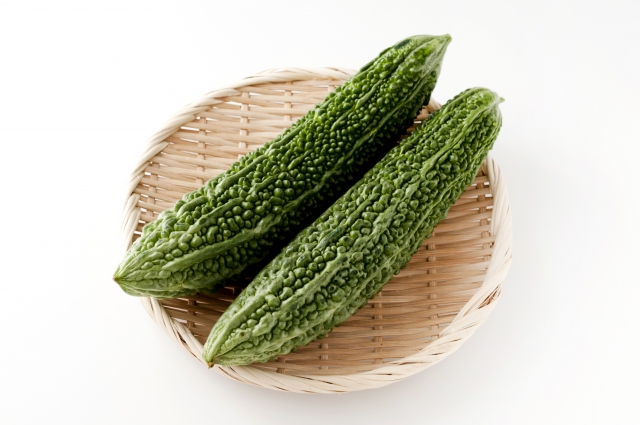
A signature Okinawan vegetable with a distinct bitterness, commonly used in dishes like Goya Champuru.
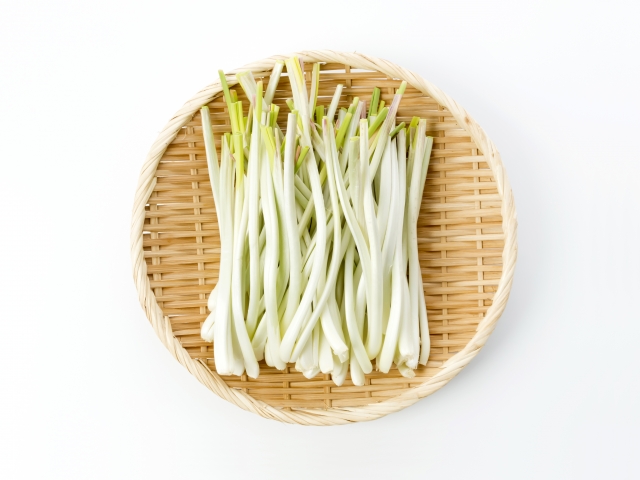
(Island Shallots)
These shallots have a strong flavor and aroma, popular as a snack or pickled side dish.
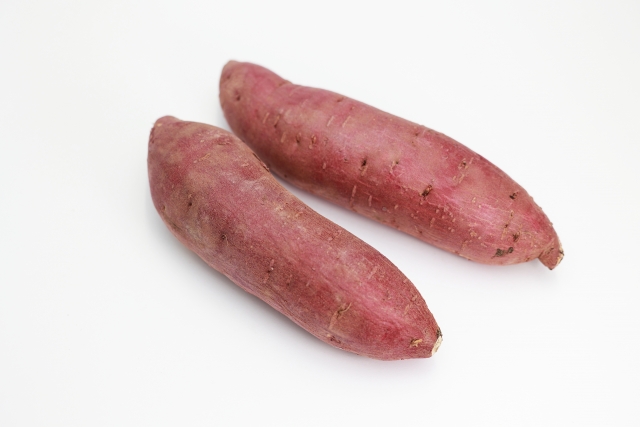
(Purple Sweet Potato)
A vibrant purple sweet potato unique to Okinawa, often used in desserts.
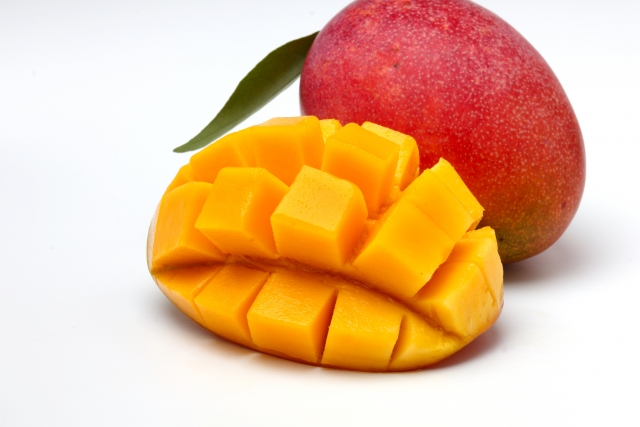
Okinawan mangoes are exceptionally sweet and aromatic, considered a luxury fruit.
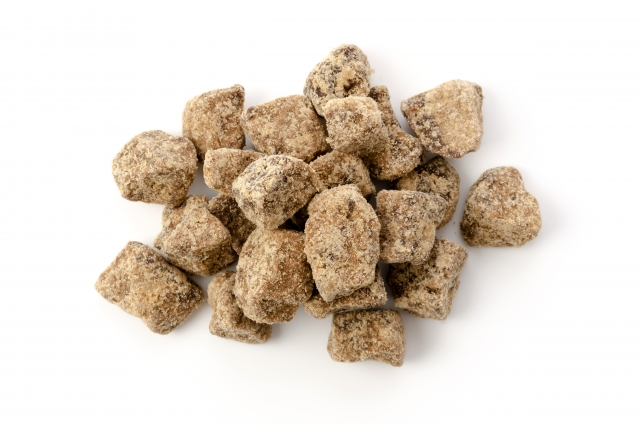
(Okinawan Brown Sugar)
A traditional sweetener made from sugarcane, known for its rich flavor and natural sweetness.
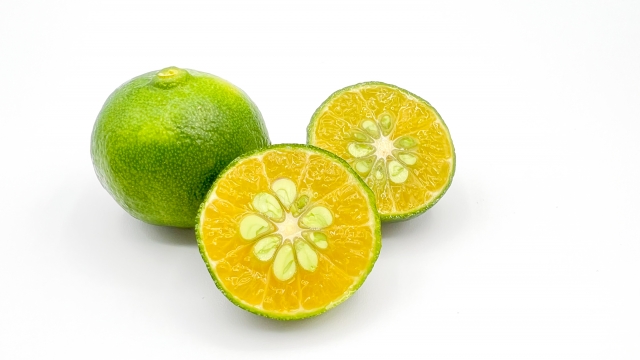
(Okinawan Lime)
A citrus fruit with a tangy, refreshing flavor, often used in drinks or dressings.
Seafood
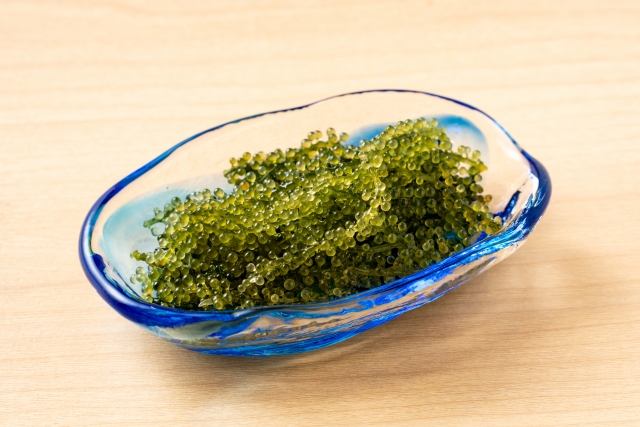
These seaweed pearls have a unique popping texture and are typically enjoyed with vinegar or soy sauce.
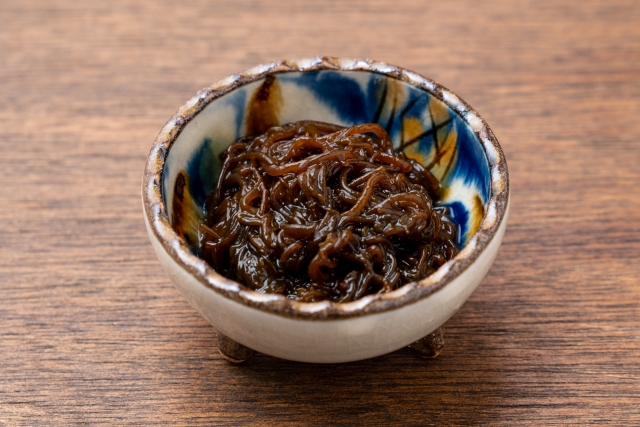
(Okinawan Seaweed)
Okinawan mozuku is known for its thick, slippery texture and crunchy bite.
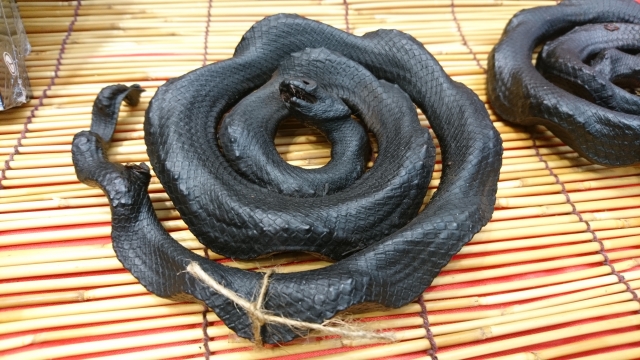
A traditional delicacy known for its rich nutritional value, often smoked and used in soups.
Meat Products
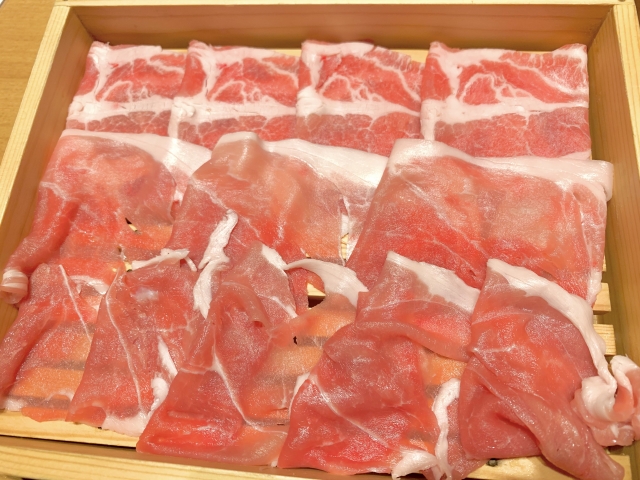
A native Okinawan pork breed known for its tender meat and rich, sweet fat.

A traditional Okinawan delicacy often served in soups or as sashimi.
Other Products
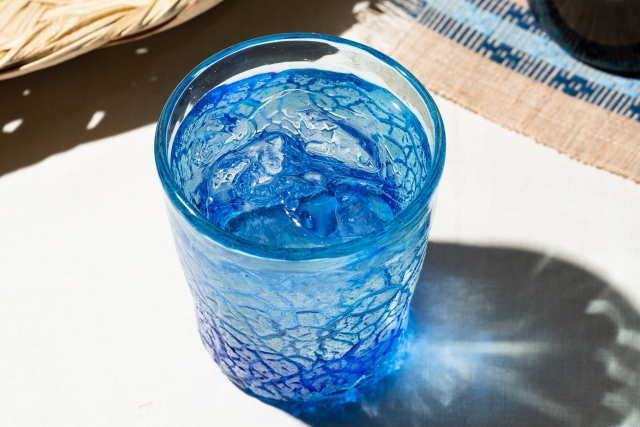
A signature Okinawan distilled liquor with a distinct aroma and deep flavor.

A traditional Okinawan cookie made from flour, sugar, and lard. This crumbly, melt-in-your-mouth treat has a rich buttery flavor and comes in various flavors like salt, brown sugar, and pineapple.
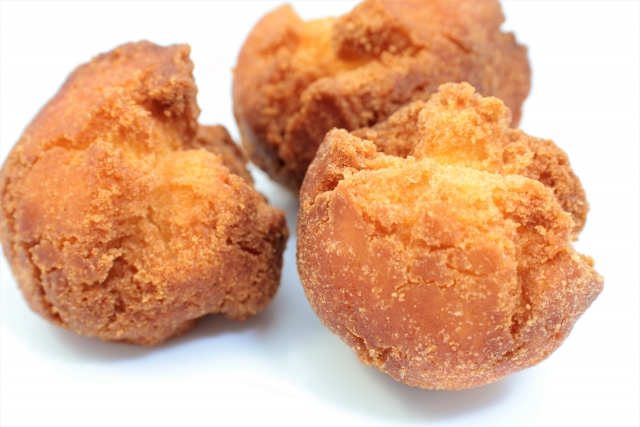
Okinawan-style deep-fried doughnuts with a crispy outer shell and fluffy interior. These golden-brown treats are slightly sweet and perfect as a snack or dessert.
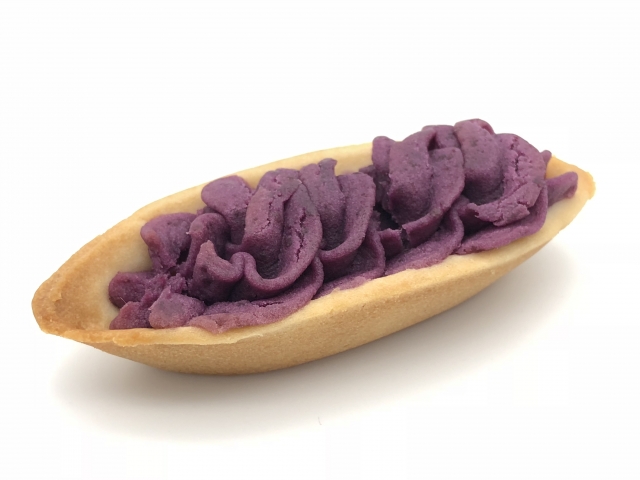
A popular Okinawan sweet featuring a rich purple sweet potato filling atop a buttery tart base. Its vibrant color and natural sweetness make it both delicious and visually appealing.
Must-Try Gourmet Guide
Okinawa Soba
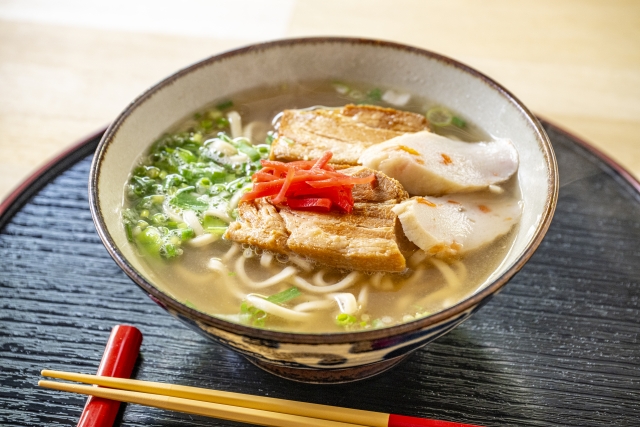
Okinawa soba is a beloved local dish featuring thick wheat noodles served in a savory broth made from pork and bonito stock. Toppings typically include sanmai niku (a tender pork belly cut with layers of skin, meat, and fat), fish cake, and green onions.
Each restaurant has its own unique take on Okinawa soba, so trying different versions is highly recommended to find your favorite flavor.
The name “Okinawa soba” can also vary depending on the toppings or region. Popular variations include soki soba, which features tender pork spare ribs, and Yaeyama soba, known for its relatively thinner noodles.
Goya Champuru
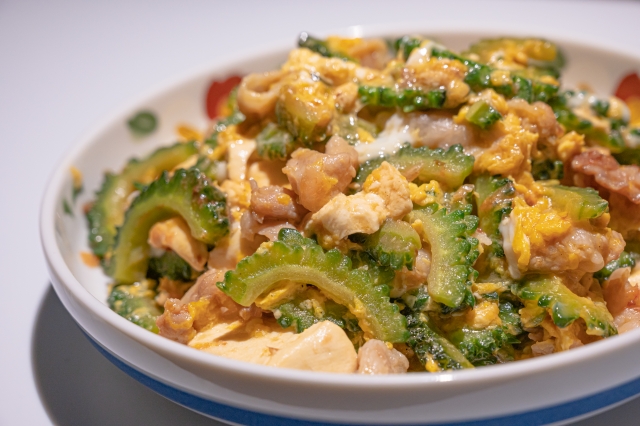
Goya champuru is a traditional Okinawan stir-fry dish made with island tofu, pork, and bitter melon (goya), finished with beaten eggs. Bitter melon is rich in vitamin C, and its distinct bitterness contrasts beautifully with the sweetness of the other ingredients and broth, making it a perfect dish to stimulate the appetite and combat summer fatigue — ideal for Okinawa’s warm climate.
The firm texture of island tofu prevents it from crumbling during cooking, making it the perfect ingredient for champuru dishes.
The word “champuru” comes from the Okinawan dialect Uchināguchi and means “mixed up,” referring to various types of stir-fried dishes in Okinawan cuisine.
Sata Andagi

When it comes to iconic Okinawan sweets, sata andagi takes the spotlight.
These deep-fried dough balls are made from a simple batter of flour, eggs, and sugar, then slowly fried at a low temperature. The result is a crispy outer shell with a moist, cake-like center — often described as Okinawa’s version of a doughnut.
Sata andagi* are popular both within and outside Okinawa, and they come in a variety of flavors such as brown sugar, purple sweet potato, and pumpkin.
They are also commonly enjoyed during celebrations, where larger-sized sata andagi are traditionally prepared to mark special occasions.
Awamori

Awamori is known as Japan’s oldest distilled liquor, originating from Okinawa and the Ryukyu Islands.
It is traditionally made using indica rice and fermented with Okinawa’s unique black koji mold to create moromi (mash), which is then distilled. This method has remained largely unchanged for over 500 years.
Awamori that has been aged for more than three years is called kusu (aged liquor), and it develops richer flavors and a smoother taste over time.
As a distilled spirit, awamori offers versatile drinking options — from the classic Okinawan style of mixing it with water to refreshing combinations with soda, making it enjoyable in various ways.
Umibudo (Sea Grapes)

One of Okinawa’s healthy delicacies is umibudo, also known as “green caviar.” This type of seaweed is known for its unique, popping texture that resembles tiny bubbles.
While umibudo is often enjoyed fresh as sashimi or in salads, Okinawa also offers popular rice bowl dishes featuring this seaweed, known as umibudo don.
Since fresh umibudo has a short shelf life and loses its texture and flavor when refrigerated, it is rarely distributed outside Okinawa.
Although considered a luxury ingredient elsewhere in Japan, umibudo is relatively affordable and easy to find within Okinawa.
Taco Rice
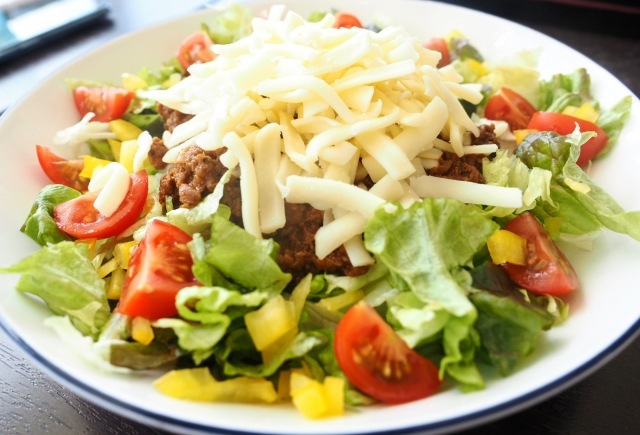
Taco rice is a unique Okinawan dish that combines elements of the classic Mexican taco with a Japanese twist — served over rice instead of tortillas.
This fusion dish originated in Okinawa during the time when the region was under American administration, inspired by traditional tacos.
Kin Town, located in the central part of Okinawa’s main island, is known as the birthplace of taco rice and is home to several famous taco rice restaurants.
As a hearty and satisfying meal, taco rice is a staple of Okinawa’s beloved B-class gourmet cuisine.
Steak
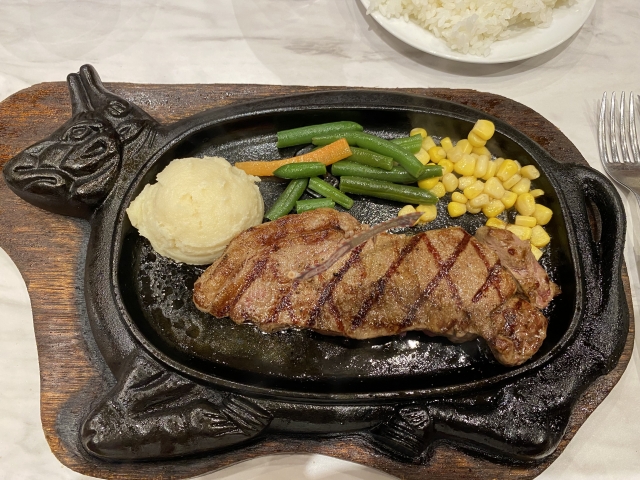
Due to Okinawa’s history under American administration, the island is still home to numerous delicious steakhouse restaurants today.
In Okinawa, steak typically refers to American-style tenderloin steak, known for its rich, meaty flavor and satisfying texture. Best of all, these mouthwatering steaks are often available at reasonable prices, making them a popular dining choice for both locals and visitors alike.
Ishigaki Beef
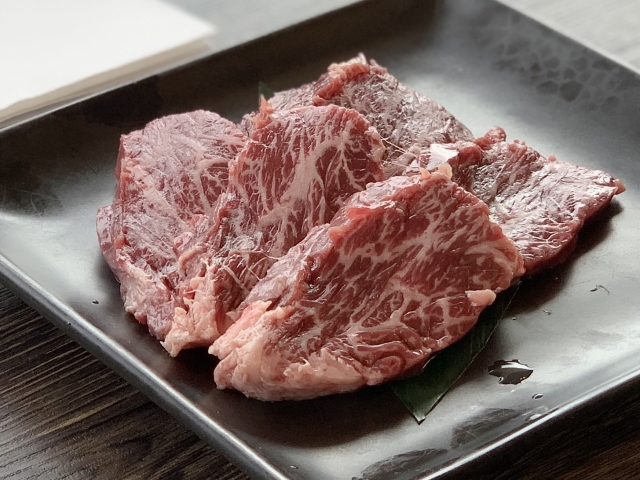
Ishigaki beef is a premium type of wagyu cattle raised on Ishigaki Island in Okinawa. Known for its rich marbling, tender texture, and deep umami flavor, Ishigaki beef is considered one of the finest types of Japanese beef.
The cattle are carefully raised in the island’s warm climate and pristine natural environment, contributing to the meat’s exceptional quality. Ishigaki beef is often enjoyed as steak, yakiniku (Japanese BBQ), or shabu-shabu to fully savor its melt-in-your-mouth texture and rich flavor.
While Ishigaki beef is highly prized throughout Japan, enjoying it locally on Ishigaki Island offers a truly special culinary experience.
Rafute
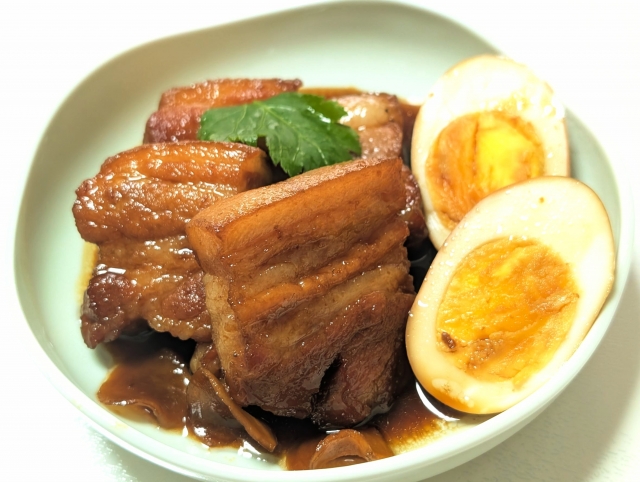
Rafute is a traditional Okinawan dish that features braised pork belly, similar to kakuni (Japanese-style simmered pork).
Thick cuts of pork belly with the skin intact are slowly simmered in a flavorful broth made with dashi, soy sauce, sugar, and awamori — Okinawa’s signature distilled liquor.
The result is tender, melt-in-your-mouth pork that falls apart effortlessly with chopsticks. The skin-on pork belly is also rich in collagen, making rafute not only delicious but also a skin-friendly dish.
Jiimami Tofu
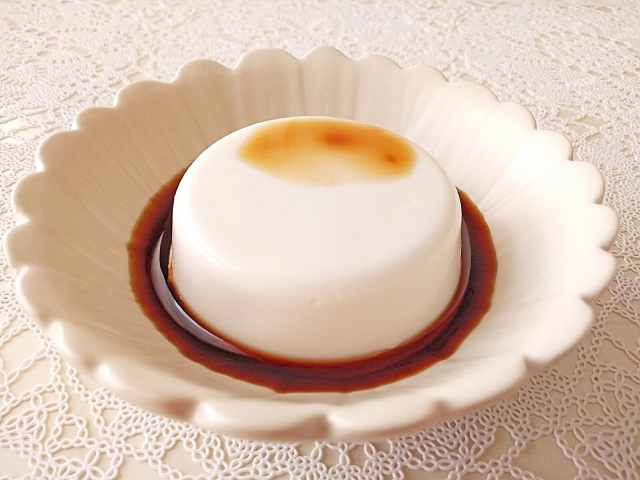
Jiimami tofu is a beloved Okinawan dish known for its subtly sweet flavor and chewy, dessert-like texture. Unlike the traditional tofu made from soybeans, jiimami tofu is made by kneading a mixture of peanut juice (from peanuts, which are locally called jiimami in Okinawa) and sweet potato starch.
Peanuts, which grow underground, were once considered a rare and precious ingredient in Okinawa, often enjoyed during special occasions such as memorial services and celebrations.
Today, jiimami tofu is commonly served in Okinawan izakayas as both a snack and a dessert. It’s traditionally topped with a sweet soy-based sauce, but more recently, variations such as brown sugar syrup have become popular, giving it a dessert-like sweetness.
Sanpin Tea
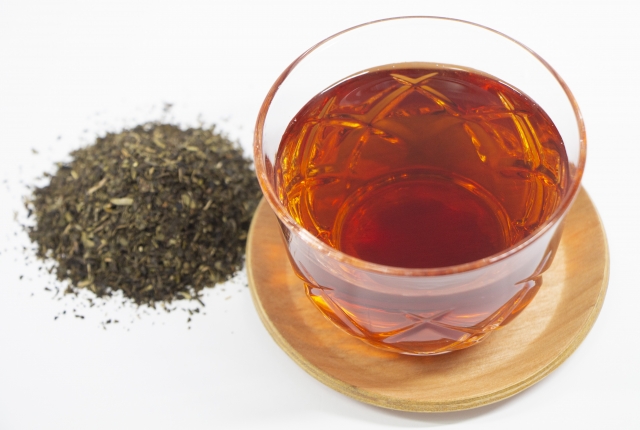
Sanpin tea is a traditional Okinawan jasmine tea, made by infusing jasmine flowers with green tea leaves. It has a delicate, floral aroma and a smooth, refreshing taste that is slightly sweet and fragrant.
This tea is widely consumed in Okinawa, both hot and cold, and is often served with meals or as a refreshing beverage during the day. Sanpin tea is known for its calming and soothing properties, making it a popular choice for relaxation.
Agu Pork

Agu pork is a native breed of pig from Okinawa, known for its high marbling and exceptional meat quality. The pigs are small in size and limited in number, making this meat a rare and valuable delicacy.
Agu pork is rich in sweetness and umami, offering a deep, natural flavor. To fully enjoy its taste, the best method is shabu-shabu. Thin slices of Agu pork are briefly dipped into hot water and then served with dipping sauces, allowing you to savor its delicate flavor and sweet, tender fat.
Spam Musubi
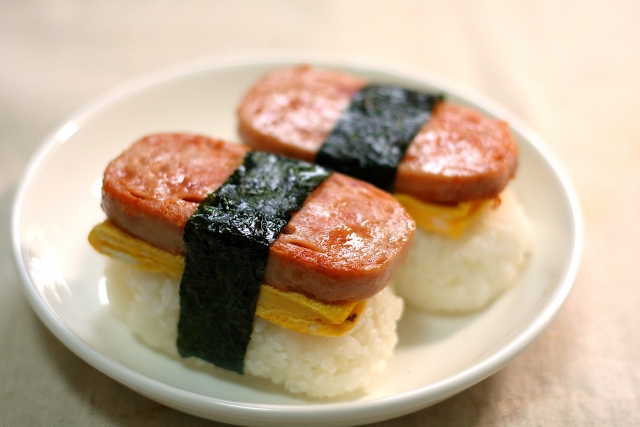
Spam musubi is a popular Okinawan and Hawaiian snack made by placing a slice of grilled or fried Spam on a block of rice, wrapped in nori (seaweed), and often seasoned with soy or teriyaki sauce.
Originally introduced to Okinawa after World War II through U.S. military rations, Spam has become a beloved part of local cuisine, enjoyed as a quick and satisfying meal or snack.
Gurukun Karaage
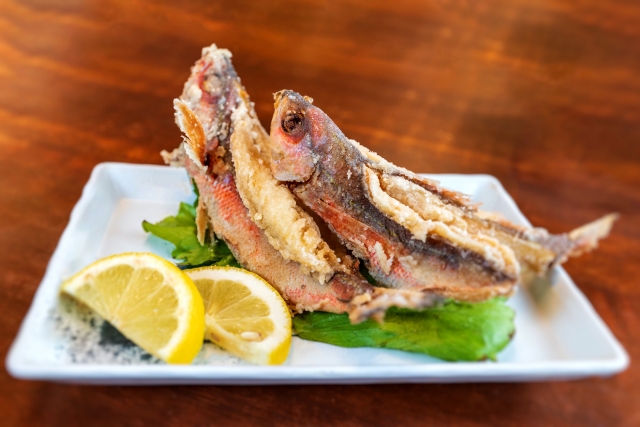
Gurukun is the Okinawan name for the fish known as takasago. It is a popular fish in Okinawa, caught year-round, and commonly appears on local tables.
Gurukun karaage is made by deep-frying the whole fish, served crispy and tender. The fish has a mild, delicate flavor and is small, allowing it to cook quickly. You can enjoy eating the entire fish, including the bones, which become crispy and crunchy.
Okinawa Tempura
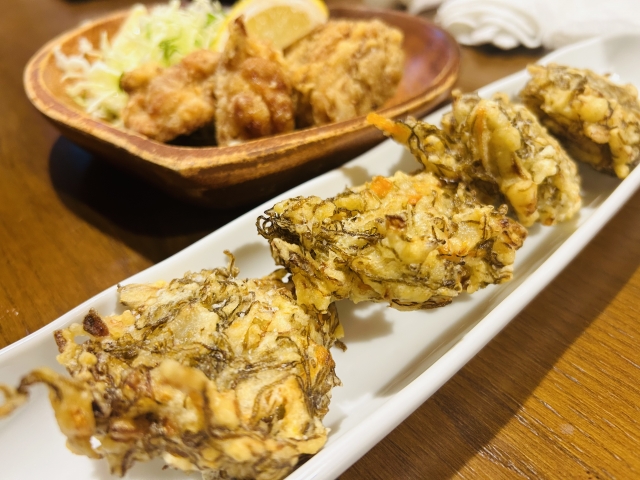
Okinawa tempura is a beloved local dish, often enjoyed as a snack, side dish, or even as a gift. It’s quite different from the tempura you might be familiar with from other parts of Japan, so it can be a surprising experience.
The unique feature of Okinawa tempura is its thick batter and chewy texture. The batter, made with flour, eggs, salt, soy sauce, and dashi, gives it a slightly yellowish tint. While it’s delicious on its own, locals typically enjoy it with a drizzle of Worcestershire sauce.
Okinawa tempura can be made with a variety of ingredients, including fish, squid, sweet potato, and bitter melon, with dozens of different variations. Among the most unique is mozuku tempura, made from a type of seaweed native to Okinawa.
Chinsuko

Chinsuko is a traditional Okinawan biscuit that has been enjoyed for centuries. Made from simple ingredients like flour, sugar, and lard, these cookies have a rich, crumbly texture that melts in your mouth.
Originally a luxury treat served to royalty during the Ryukyu Kingdom era, chinsuko has now become a popular souvenir for visitors to Okinawa. While the classic flavor is sweet and buttery, modern variations include unique Okinawan flavors such as shikuwasa (a local citrus), kokuto (Okinawan brown sugar), and beni-imo (purple sweet potato).
Its delightful texture and variety of flavors make chinsuko a must-try treat when exploring Okinawa’s culinary scene.
Blue Seal Ice Cream

Blue Seal Ice Cream is a famous ice cream brand in Okinawa, known for its rich and creamy texture and unique flavors inspired by local ingredients. Originally established by the U.S. military in 1948, Blue Seal has become a beloved part of Okinawan food culture.
The ice cream comes in a variety of flavors, many of which reflect Okinawa’s tropical climate, such as kokuto (black sugar), mango, and shikuwasa (a local citrus fruit). The brand is especially popular among locals and tourists alike, often enjoyed as a refreshing treat on hot Okinawan days.
Comments